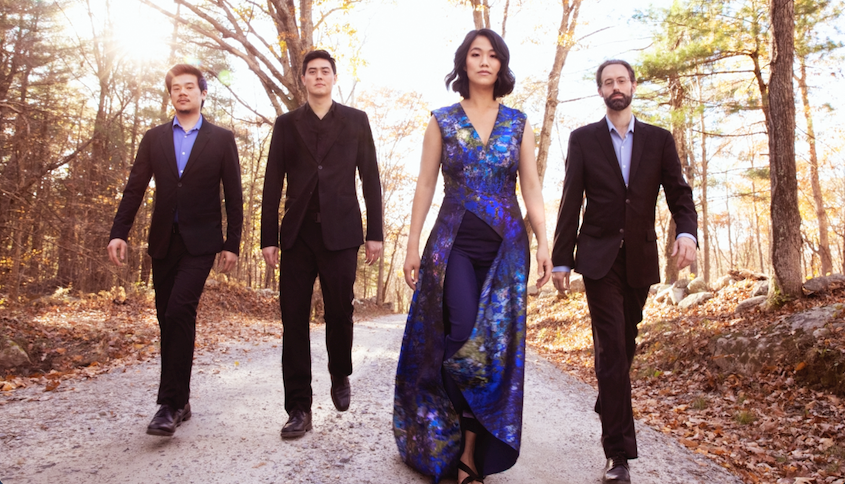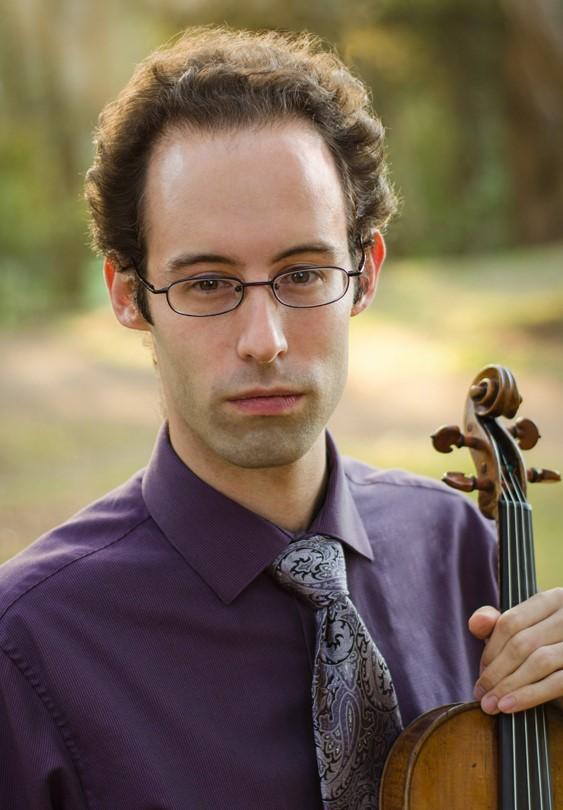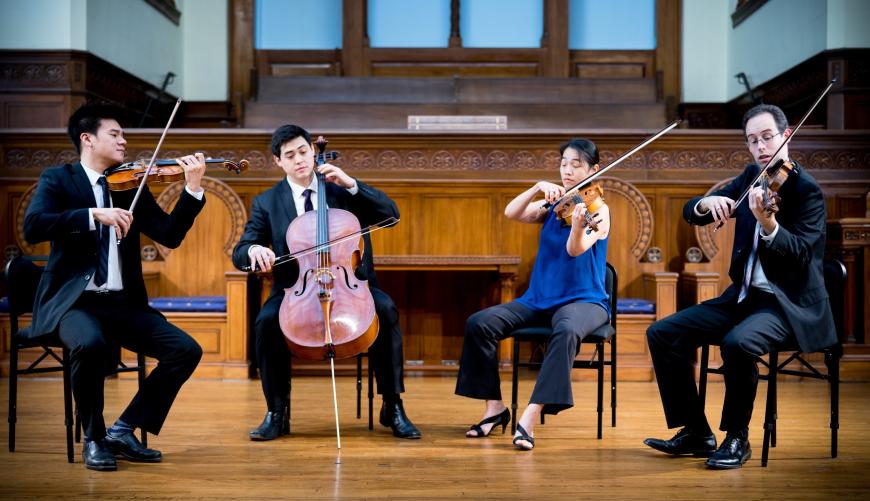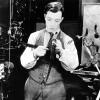
As far as summertime outings are concerned, not much beats listening to live chamber music while sipping a glass of wine. That’s what concertgoers experience when they attend Music in the Vineyards (MITV), the world-renowned chamber music festival founded in 1995 by Artistic Directors Michael Adams and Daria Tedeschi Adams. Held in stunning estate settings in Napa Valley, the festival, which showcases distinguished musicians and emerging talent, takes place over four weekends, from July 28 – Aug. 20. This year’s ensembles include the Catalyst Quartet, the Calidore Quartet, and the Telegraph Quartet.
Returning to the festival for a week in residence, the Telegraph Quartet, which was formed in 2013, will be featured in two programs, Aug. 16 and 19. Violinists Joseph Maile and Eric Chin, violist Pei-Ling Lin, and cellist Jeremiah Shaw make up this group that snagged the grand prize at the 2014 Fischoff Competition and won the 2016 Naumburg Chamber Music Competition. Currently, the ensemble is the quartet-in-residence at the San Francisco Conservatory of Music.

For Maile, 38, being at MITV means the opportunity to connect with people, which is part of the genesis of the Quartet’s moniker. “We chose the name the Telegraph Quartet,” he explained, “after going through a lot of names. Because it was regional, it kind of suggested Telegraph Hill [in San Francisco] or Telegraph Avenue in Berkeley. But also, the telegraph, the actual machine, is an old form of communication and connected a lot of people for the first time.”
The Quartet is sure to connect with music lovers during its Aug. 16 concert at Frog’s Leap Winery, with Haydn’s Quartet in F Major, Op. 50, No. 5, and Gabriela Lena Frank’s Leyendas: An Andean Walkabout on the program.
“The Haydn quartet is known as ‘The Dream,’” Maile pointed out. “Most of his quartets have some hidden eccentricity in them, and this is kind of a goofy quartet to start off with. It’s got charming moments and dialogues between the two violins, and the cello and viola want to join the party, but they’re a little oafish. We try to play up those kinds of things; it’s conversational music.
“The second movement is wistful and dreamy sounding,” he added. “And the final movement is a lot of fun — and a lot of fiddling for me.”
As for Frank’s 2001 work, Maile said that it “mimics folk instruments. There’s a panpipe color and choice of pitch with the viola [that] is breathy and flute-like. The piece continues and sounds like a charango, a kind of guitar. These are the colors [Frank] is drawing on.”
This year’s Not-So-Silent Cinema, which recreates the film experience of 100 years ago, before recorded sound, takes place on Aug. 19 at the Jarvis Conservatory and at the St. Helena Performing Arts Center. The Telegraph Quartet will perform Stephen Prutsman’s original scores for two classic silents, The Cabinet of Dr. Caligari, a horror film and quintessential work of German expressionism, and Buster Keaton’s iconic College.
And speaking of recorded sound, the Quartet is anticipating the release of its newest album, Divergent Paths, with music of Arnold Schoenberg and Maurice Ravel. The first of a multivolume set, it’s issued by Cleveland-based label Azica Records and will drop at the end of August.
“That’s the first of three volumes we plan to release that all focus on a particular snapshot or relationship of pieces in the 20th century.” explained Maile. “This is Schoenberg’s First String Quartet and Ravel’s only string quartet, [and] it’s at the dawn of the 20th century. There was Freud with a whole new theory of psychology, and you can hear different tastes of that kind of quality in the music — the sensual, the psychological.
“Ravel is pristine in a lot of ways but vivid,” he added. “Schoenberg is more on the side of truly overwhelming. It’s [as if] his subconscious demons are coming to life. He talked about [this quartet] as a Wagner opera but for four voices. It’s complex in how it interweaves melodies in and out, different leitmotifs that morph and evolve throughout the four movements.
“At the end,” he continued, “it’s such a payout. It gets thorny and strife-ridden. The fourth movement is some kind of transcendent experience, and all the themes come back. It’s a true late-Romantic style of connection.”
There’s that word again — “connection” — something the Telegraph Quartet also does through its education and audience engagement programs. In the fall of 2017, the Quartet traveled to communities and schools in Maine with Yellow Barn’s Music Haul, a mobile performance stage that takes music out of the concert hall and brings it to communities across the U.S.

Then, in the fall of 2020, during the dark days of the pandemic, the Quartet launched an online video project, TeleLab, in which the ensemble collectively breaks down the components of movements from various works for string quartet.
“We pull the pieces apart and get people used to hearing what we think are the most important things,” explained Maile. “It’s more than just an open rehearsal. It’s a way for us to give people a window into how we’re looking at music. So far, we’re only doing this with 20th-century works, but we’re thinking about doing the same thing with other works. Why is Haydn doing what he’s doing? We’re thinking about [using] TeleLab for pieces that aren’t insane and tricky.”
In the interim, Maile, who is married to violist Pei-Ling Lin, with whom he has a 2-year old son, plans on taking advantage of the ambience at MITV by doing some imbibing himself. “They’re always wonderfully generous that way. It’s a nice perk doing a festival that is literally in the vineyards.
“Sometimes we’re in a hall,” he explained. “Sometimes we’re in the cellar or right on the grounds of the vineyards outside. It has its challenges when it comes to acoustics — there might not be enough walls to bounce the sound off of, but they have it down so well. And it’s top-quality, musically.”




